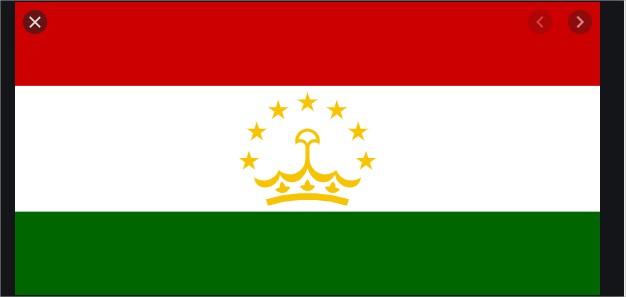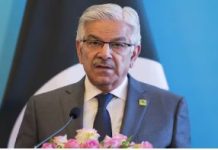Large populations of ethnic Tajiks and Tajik categories exist in the population of Pakistan, though these may be unrecognizable because they speak Pashto and their identity has remained largely subdued and unrecognised till now. Given below is a breakup of the four significant Tajik communities of Pakistan.
Recent Investigations have highlighted the existence of a previously obscure Tajik kingdom in what now comprises north Pakistan and northeast Afghanistan before the Mughal Empire, and coterminous with the Delhi Sultanate, of which it was a subordinate state engendered by the Ghurid Empire. Sufficient evidence is there to confirm the existence of a sizeable community of Dehqans in the Peshawar Valley, Bajaur, Dir and Swat from Sasanian times and earlier. These were part of the Bactrian Dehqans of Badakhshan, and the adjacent Kunar and Laghman. In this regard, the Shalmani Dehqans are well known. These were Zoroastrians who duly converted to Islam at the hands of the Ghaznavids. A clan from among the Shalmanis was known as “Gabri” — from the pejorative Muslim term for Zoroastrian, Gabr — even long after they accepted Islam. The Gabris (or Gibaris) were the Sultans of the Pech River Valley region in the present day Kunar Province of Afghanistan during the time of the Ghori Sultanate. They formed a faction with two other affiliated clans, the Mitravi (from Mithra) and Mumiali. Acting as Ghori vassals, the Swatis rose and conquered the area from Kabul to Kashmir as Ghori vassals, and became collectively known as Suwadis (later corrupted to Swati). Suwadi was said to be an early Arab revenue term, of Sassanian origin, which referred to the inhabitants of fertile lands irrigated by rivers. The kingdom they ruled became known as the Gabr State or Suwad (Swat) Sultanate. They spoke Gabri, an old and extinct dialect of Dari. Dehqans in this region, though now Pashto speaking — are known to have spoken quaint variations of Persian such as Gabri, Dehqani and Laghmani, the presence here of which is documented by the first Mughal Emperor Babur himself. Though now extinct, these are thought to have been similar to the present day Tajik dialects of Shughni and Rushani.
In 1339 a Swati adventurer went and settled in Kashmir, where he set up the Shah Miri Dynasty of the first Muslim Sultanate.
By this time however, most of the western parts of the Gabr or Swat Sultanate beyond the Sulaiman Mountains and also to the north in the Pamirs, Karakorams and Wakhan had broken away, and in about 1350 what remained was renamed as “Pakhli Sarkar” and was made into a satellite of the powerful and big new Kashmir Sultanate under a mutual agreement. Pakhli Sarkar consisted of five wilayats or provinces: Bajaur, Swat, Buner, Hashtnagar-Bagram and another, Cis-Indus Pakhli. But each of these was far more extensive than the present day units of the same names. Kashmir later protected Pakhli Sarkar from the depredations of Tamerlane when he invaded the area in 1398. However he was permitted to take Pakhli wilayat which was renamed Hazara, where he settled a thousand of his Turkish soldiers who founded a small but long lived Turkish kingdom there.
The Swat Sultanate/Gabr/Pakhli Sarkar, in its final form as a vassal kingdom of Kashmir — from 1400 to 1519 — was bounded on the north by the Chitral River, to the west by the Sulaiman Mountain range, to the south by River Kabul and on the east by River Indus.
The Swati Sultanate was brought to an end in 1519 by Babur when he was establishing the Mughal Empire. Earlier, mass Pashtun tribal migrations from Sistan and Kabul towards the Gandhara region had been precipitated by Timurid actions during the 1470s and Babur made use of Yusufzai Pashtun refugees to revolt against the last Sultan of Swat, the decadent Sultan Awais Gabri-Swati who fled north to a remote area of Dir where he and his progeny established their petty fief for about a century, before disappearing from history. Earlier in the same year, Babur had initially attacked and conquered the Bajaur wilayat of the Swat Sultanate, killing its governor Malik Haider Ali Gabri-Swati and reducing his Gabr Fortress called Gabrkot where 3000 inhabitants of the town inside were massacred. Babur immortalizes the gory details of this action in his world renowned autobiography Baburnama, devoting a full chapter to them. (Shah Miri Kashmir was in turn conquered in 1586 by Babur’s grandson Akbar the Great).
A lot of the Swati ruling class and population who escaped death and subservience were dispersed and fled across the Indus into the Hazara region. Elsewhere, most were forcibly Pashtunised and rapidly assimilated into the tribes of the ever increasing flood of Sarabani Pashtun invaders, thus undergoing a change in ethnic identity. Heavy absorption is indicated in tribes and clans such as the Nekpikhel, Malezai and Ranizai sections of the Yusufzais; Salarzai, Mamund, Mohmand, Daudzai, Kheshgi and so on. Now, only genetic testing can reveal such absorbed Swati-Shalmani bloodlines. Many other Swatis took on the more conducive identity of astanadars (“clerical elite” classes) who although they speak Pashto, are not traditionally regarded as ethnic Pashtuns. With their takeover of the social system of Peshawar Valley, and their own specific form of intimidation and self-glorification, the new “Pashtun” identity of the society became established.
Only in the inaccessible and backward Mansehra District of the remote Hazara Division, do Swatis still retain their old feudal clout, although their old ethnic awareness as Tajiks has almost totally disappeared. They are thought to number about 1.8 million. Although their ethnic status has remained decidedly ambiguous in the past 500 years, in the 20th Century in particular Swatis have tried to get recognition as being of Pashtun pedigree, and may have succeeded in the era of Pashtun “internet nationalism” as it doesn’t require much to get ingratiated in this manner.
Remnants of the Shalmanis exist all over the Peshawar Valley area in sizeable communities. They are mostly absorbed into the Mohmand Pashtun tribe, and are as such known by that identity too. They maintain their traditions of origin from Assyrian areas now in Iranian and Iraqi Kurdistan, and this seems to be supported by genetic evidence, especially as far as the Y-Haplogroup Q-Y1150 is concerned. They also have vague yet strong traditions of calling themselves “Arabs” who are descended from “Sikandar Zulqarnain” (thought to be Cyrus the Great) — a trait which they share with other Dehqans from the same ancient Bactria-Gandhara region. Shalmanis also call themselves Soleimani. Both Shalmani and Soleimani are also prominent names in Iran. It is evident that the Shalmani-Swati Dehqans are the chief indigenous Tajik community of this region, having a longstanding presence here that likely exceeds 2000 years.
Other Pashtunised clans of known Tajik Dehqan origin in the Peshawar Valley and surrounding environs are the Papinkhels, Akhundkhels, Farmulis, Sargani, Behsud and Roghani. Suspected also are the Pashtun Utmankhels, Yusufzai Degankhels and Waziri Degankhels.
Besides indigenous Swatis, and Dehqans who live in Talash Valley, Dir is also home to a large Tajik community of labourers who were recently (within the last century) “imported” here after 1897 by its former ruler the Nawab of Dir — from Parwan and Panjsher across the Durand Line. They comprise of ahingars (blacksmiths) and kamangars (makers of bows and arrows or armourers). They formerly manufactured armaments for the Nawab’s armies. Being poor and landless artisans for the most part, they are still looked down upon as an underclass by the other, indigenous Tajiks such as the Swatis and Dehqans who are better off than them. These Tajiks however, are fully conscious of their Tajik identity and proudly flaunt it — even though they are totally Pashtunised. Being poor they are deeply conservative and religious. They are pejoratively referred to by their Swati and other detractors as “Shaarey”, a word meaning “barren” or destitute — which is taken from the Village Shaara where one of their prominent ancestors is buried. Many others, such as Kohistani Dards, Gujjars and destitute Pashtuns of the Malezai tribe are also believed to have joined the ranks of these Tajiks, and adopted this name for themselves.
It is widely held that the Pakistani Taliban revolt of 2009 in the Dir-Swat region was actually a broad based class revolt against Pashtun overlordship, and largely consisted of such poor Tajiks, Gujjars and Swatis. Religion merely furnished it with a suitable ideology where none other existed or was acceptable. The notorious Dir cleric Maulana Sufi Muhammad’s Tajik roots are known, while his late son-in-law Maulana Fazlullah who was head of the Pakistani Taliban, belonged to the elitist Nekpikhel clan of Yusufzai Pashtuns — a clan known to comprise of 50% “absorbed” and hidden or “occluded” Swati Tajiks.
There exists a very large community of recent Tajik immigrant arrivals in Killi Kabir, a large village within the environs of Quetta Cantonment in Balochistan Province, Pakistan. They began emigrating to Quetta from the Kandahar area in the early 20th Century and the process continues to date. Most of these Tajiks are established and wealthy, having arrived here before the creation of Pakistan in 1947. They operate in the lucrative fruit and gemstone trades of Quetta City, and own a media publishing house — and are politically and socially influential and respected. Most of them now speak Pashto, but a sizeable number are also fluent in Persian.
However, many people suspect that some prominent leaders of this community facilitate the obtaining of Pakistani identity papers by Afghan refugees to pass themselves off as “Pakistani” Tajiks related to those of Kili Kabir, thus making it easy for them to obtain Pakistani citizenship on questionable grounds. The fact that there exist rival political pressure groups within this community seems to confirm this.
This is a large Tajik community that has been living in Balochistan for about three centuries. Originally, they were brought here by Nader Shah Afshar, to man the bureaucracy of his ally, the Khan of Kalat. Now an influential feudal community of Balochistan, the Dehwars speak their own dialect of Persian called Dehwari — but they are otherwise also heavily influenced by the local Balochi and Brahui cultures and languages.
These constitute the biggest Pashtun tribal confederacy — and were those “Pashtuns” who achieved historical greatness by conquest and rule in both India and Iran. Their traditional genealogical legend attests to interesting Tajik origins and linkages — as well as the presence in it, and among them, of names such as Suri, which may prove to be ancient linkages with the famed Parthian House of Suren. Not only does their geographic location conform to what this legend relates, but the genealogical legend of the origins of the Bettani confederacy corresponds to what is academically known regarding them — and it seems to echo complex and historically documented processes of ethnic fusion (between the Ghori Tajiks and the Khiljis/Khalaj Turks which then resulted in the formation of the “Ghiljis”) — which was further subject to a process of Afghanisation or “Pashtunisation” because their present identity is Afghan but it differs a lot from that of other Afghans, such as the Sarabanis in terms of behavior and characteristics one may term as “Tajik”. However the nature of this subject is such that it merits separate discussion elsewhere.
NOTE: The tiny Tajik minority communities of northern Pakistan — such as the Wakhis and Gojalis found in Chitral and Gilgit-Baltistan need a separate discussion, due to the fact that they are known as such, are located very near to Tajikistan and are on Pakistan’s peripheries; therefore I have not mentioned these for obvious reasons in this article — which deals primarily with “lost” Tajiks.
In 2002, the late Prof. Muhammad Akhtar, a Swati who was a bureaucrat, lawyer, and researcher — published a groundbreaking work on the history of the Tajik Swatis in the background of internationally accepted history. This book was published as a private effort, consisting of a run of 10,000 copies, but remained largely unnoticed for the next 15 years even in the locality of its publication (the city of Abbottabad). In 2017 this author, who is a scholar of Shalmani origin and based in the city of Peshawar, published a research paper based on the above book and other available material — which introduced the subject of Swati Tajiks and other Tajiks in Pakistan to the world at large and the academic community. A condensed version of this academic paper was published as a newspaper article by the notable Pakistani weekly The Friday Times which became very popular and was subsequently widely distributed by Tajiks in Afghanistan and Tajikistan. This was followed by translations of the article and interviews of the author published by websites and newspapers in Tajikistan and Afghanistan. These publications and efforts received much acclaim and notice. Earlier in 2016 some scholars of Hazara University had also published a brief research paper on the Gibar Sultanate, but it still remains unnoticed.
Despite many Pakistani citizens of Tajik origin being aware of their heritage, and using the term “Tajik” in their names — the Government of Pakistan does not officially recognize the existence of Tajiks among its officially listed ethnic categories. The result is that Tajiks are lumped together with the ethnicity associated with their area of domicile and the language they speak (e.g. mostly Pashtun, Baloch and others).
The historiography of Tajiks in this region — if properly investigated, may well prove to be the basis of its actual history, including matters now bluntly taken to be “Pashtun”.

















